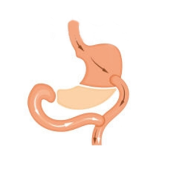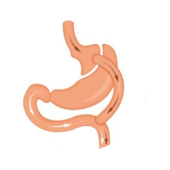There are different types of bariatric surgeries, four of which are popular among patients. Each one is different in terms of procedure and effects. There are side effects for each of these bariatric surgeries. Patients should consider the benefits and side effects of these bariatric surgeries before having them performed. Below are different types of bariatric procedures and their differences.
Adjustable Gastric Band
Compared to other bariatric surgeries, adjustable gastric banding might be the least invasive procedure. The surgery doesn’t alter the shape, size, or position of the stomach and intestines. What the procedure aims to do is reduce the amount of food that can be eaten by implanting a small silicone band on the upper part of the stomach. This creates a pouch of stomach that can hold the food. After eating, food enters the rest of the stomach. The silicone band is attached to a balloon, which can be used to adjust the tightness of the ring. Because there are no physical changes made on the stomach and intestine, the procedure is completely reversible. Once patients achieve the ideal weight, they have the option to remove the adjustable gastric band.
Biliopancreatic Diversion with Duodenal Switch
Biliopancreatic Diversion with Duodenal Switch (BPD/DS) is a surgery that has two procedures. The first one is a sleeve gastrectomy, where 80% of the stomach is removed. The remaining stomach resembles the shape of a banana, which can hold less amount of food. A small part of the intestine connected to the stomach called duodenum, also remains. The second procedure includes attaching the second half of the small intestine into the duodenum. While a very effective weight loss procedure, there are higher risks with BPD/DS. Patients can experience increased malnutrition after the procedure. However, the effects of this procedure to improve the health of patients with type 2 diabetes, hyperlipidemia, and hypertension is also better.
Mini Gastric Bypass
Mini gastric bypass is just like a traditional gastric bypass, but has a faster and easier procedure. This treatment almost has the same effects as traditional gastric bypass. The difference in the procedure is that traditional gastric bypass cuts off the top part of the stomach to make a smaller pouch. Mini gastric bypass, on the other hand, creates a narrow tube on the right side of the stomach, which is larger than traditional gastric bypass’ small pouch. The small intestine is looped and hooked at the end of this narrow tube. This procedure is considered less invasive than traditional gastric bypass and has fewer risks of complications.
Roux-en-Y Gastric Bypass
The procedure for Roux-en-Y gastric bypass cuts off the top part of the stomach to create a smaller pouch that can only hold a little amount of food. The surgery reconnects the small upper pouch and the remaining big stomach pouch to the lower half of the small intestines. This causes food to bypass most of the stomach and the first half of the small intestine. The procedure is non-reversible and has serious side effects that you should consider. However, Roux-en-Y gastric bypass is one of the fastest and most effective procedures for patients to lose weight.
Sleeve Gastrectomy
With sleeve gastrectomy, only the first part of the stomach is kept. Almost 80% of the stomach is cut off, leaving a banana-shaped stomach. The intestines are kept as is, so there is less risk of nutrient malabsorption. While this is a great option for patients, the procedure also shows slower and less weight loss compared to Roux-en-Y gastric bypass. However, this is still an effective procedure to achieve a healthy weight for patients. Sleeve gastrectomy also has less complications and side effects for patients.






